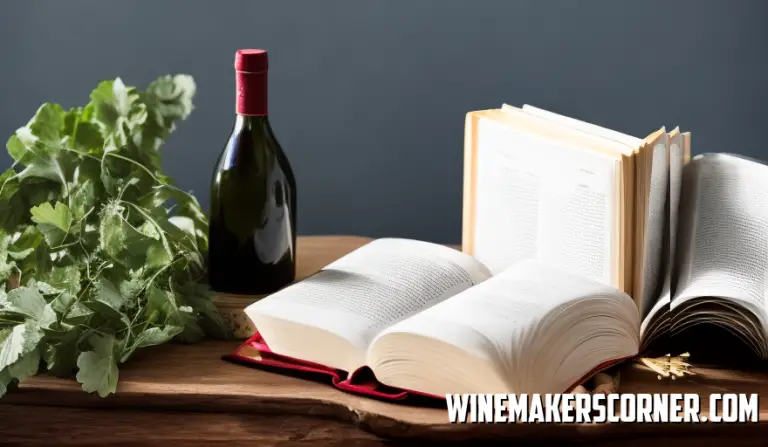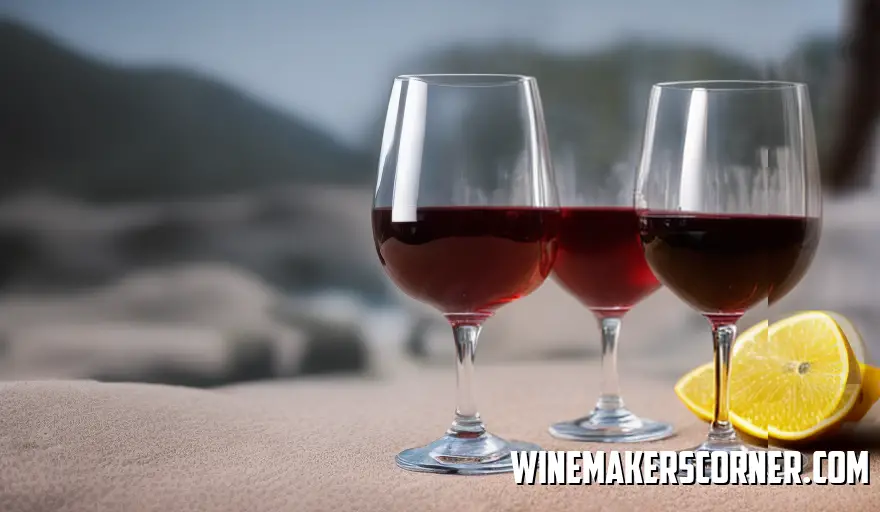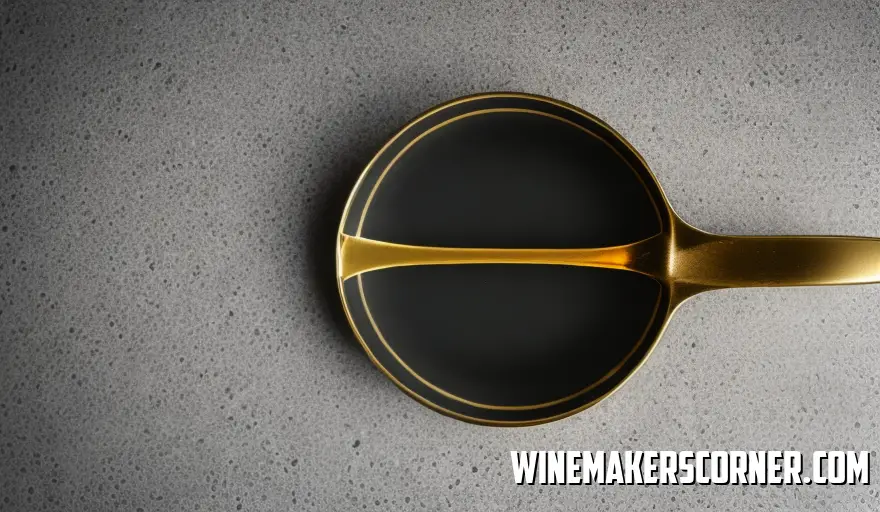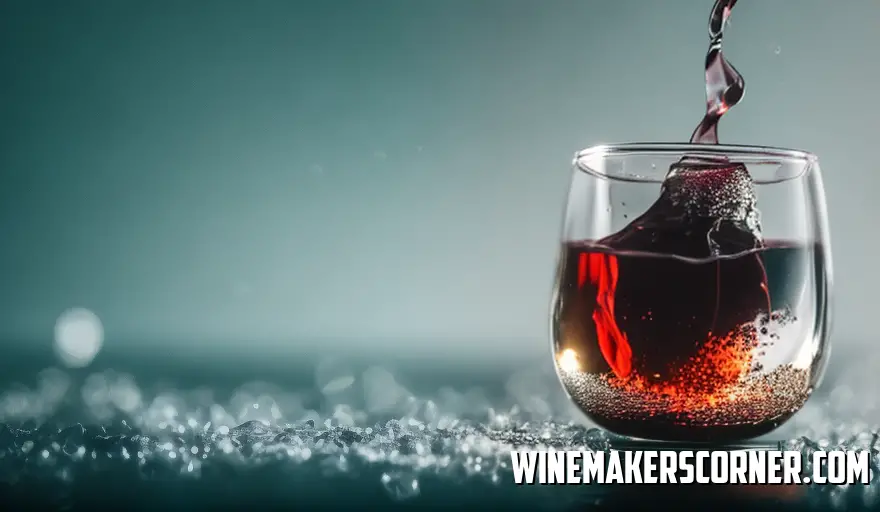Enter the world of wine – where history meets culture meets science – creating an unforgettable sensory experience with every sip. If you’re wondering about the craft behind each bottle or yearning to upskill your vino game – get ready for an exciting journey!
From understanding complicated winemaking procedures to diving deep into grape characteristics and terroir intricacies, from deciphering mysteries through viticulture principles to mastering tasting techniques – this article is here to guide you through it all!
So kick back with a glass in hand as we embark on a wine journey with top books that can turn anyone into a true connoisseur!
Table of Contents
Understanding the Winemaking Process
Winemaking is a mesmerizing journey incorporating science, tradition, and passion throughout its intricate process from vine to bottle. To fully appreciate wine’s essence, delving into the specifics is essential- what better way than through books illuminating the craft? Firstly, a crucial understanding of terroir- encompassing soil quality, climate conditions, and topography affecting grapevines’ growth- imparts unique flavors to each wine. Jamie Goode’s “The Science of Wine: From Vine to Glass” offers readers a comprehensive understanding of these complexities.
Next comes viticulture – cultivating grapevines for winemaking purposes. Stephen Skelton MW’s book “Viticulture: An Introduction to Commercial Grape Growing for Wine Production” provides valuable insights into pruning methods, canopy management, and common vineyard diseases.
Further onto winemaking itself – an art form comprising several stages like plucking grapes or fermenting them into alcohol- Christian E Butzke addresses commonly faced problems vintners encounter in his book “Winemaking Problems Solved.” Ready to dive deeper into the world of winemaking? Barrel aging is an excellent place to start – an essential component in shaping a wine’s character.
The intricate dance between oak and wine has a subtle but profound impact on flavor profiles that can’t be ignored. To explore this further, consult “Wood & Wine” by Charles MacLean – it provides valuable insights into barrel selection and aging techniques. Blending different wines is another critical skill for creating balanced, complex flavors.
For tips on how to master this art, I recommend reading “The Art & Science of Wine Blending” by Émile Peynaud. Achieving excellence in winemaking requires both scientific knowledge and artistic skill. From tending to the grapes in unique terroir to blending the perfect balance of varietals, every step is crucial.
If you’re looking to up your vino game, these books are excellent resources for expanding your understanding and improving your techniques. Cheers to your success in mastering the craft of winemaking!
Grape Varieties and Terroir
To unlock a deeper understanding of wine, paying attention to two critical aspects is vital: the grape variety used and the terroir it comes from. These two components are responsible for differentiating wine flavors on your palette, besides enhancing winemaking skills. Let’s explore each one further without delay: Firstly, great care must be taken when selecting grapes, as this will define your brew tastes. The type of grape will dictate everything from color to taste nuances.
For example, Cabernet Sauvignon gives out firm tannins with dark fruity notes, while Chardonnay has velvety undertones underpinned by luscious buttery
notes. Owning a reference book like Jancis Robinsons’ comprehensive guide “Wine Grapes” of over 1,300 varieties is indispensable when striving to become an expert winemaker. Secondly, terroir plays a critical role in flavor development. Different soil types, climates, and topography all affect the growth of grapes, ultimately determining the fragrance and taste of your wine. It’s no secret in the wine world that terroir is essential.
Even if two vineyards grow identical grapes, their wines will be distinct because they have different terroirs. If you’re interested in delving into this concept further, perusing Jamie Goode’s book “The Science of Wine: From Vine to Glass” could help you gain more insight into the subject matter.
To master your skills as a vino connoisseur, familiarize yourself with grape varieties and terroir; together, these components create an expansive range of flavorful wines that have their characteristics — making every sip exciting.
Wine Tasting and Appreciation Techniques
Wine tasting requires immense skillfulness that can only be perfected through practice with a highly discerning palate- similar to art. To excel in winemaking, comprehending the nuances of each type of wine is crucial for success. Here are some valuable techniques that will help refine our skills:
The first thing to do is examine the appearance of the wine- this provides important clues about its age and quality by observing its color and clarity. A young red may show off vibrant purple hues. In contrast, aged ones tend towards garnet tones- swirling your glass gently enables aromatic compounds (esters) release, which unlocks the bouquet essential in determining flavor perception.
Inhale deeply – identify any fruity notes or earthy undertones. Take notes as necessary before taking small sips to relish the wine’s texture and flavor profile- don’t be in a hurry. Finally, swallow or spit it out as per practice. Wine tasting is an art form all it’s’ own – but don’t worry, you don’t need to be an expert to appreciate everything it fully offers.
One of the most important things to remember is how a wine’s acidity, sweetness, tannin levels, and overall balance come together. And once you’ve sampled your drink take some time to notice how long those flavors stick around in your mouth and what kind of sensation they leave behind. Was it a quick hit, or did things linger on for a bit? Did everything finish up smoothly, or was it more of a rough ride? The finish carries so much information about the wine quality and what aging potential it holds. But wine appreciation has so much more going on than sensory analysis! Understanding the history and origins of grape varieties’ production methods – even knowing which foods pair best with which types – can add extra layers that enhance your experience.
Remember: take each step slowly during wine tasting and give yourself time to let everything sink in. It takes practice, but you’ll soon be a real connoisseur!
The Science of Viticulture
The art of winemaking combines science, tradition, and passion – all centered around cultivating and harvesting grapes, known as viticulture. To truly master your vino skills requires an understanding of this complex process.
Terroir is one crucial factor shaping wine’s character that encompasses climate, soil composition, and topography which affect grape growth collectively. Mastering this aspect allows winemakers to customize their vineyards for desired outcomes.
Grape varieties have also gained significance as they now number over 10k worldwide; selecting suitable cultivars determines taste profile, among other qualities like acidity levels or sugar content needed in making unique blends tailored for specific preferences or occasions.
Furthermore, good vineyard management techniques like pruning methods that control vine vigor or canopy management that optimizes sunlight exposure and air circulation are essential in producing healthy grapes that yield excellent wines. Achieving successful winemaking results during the grape-picking season hinges mainly on timing.
Picking grapes at just the right moment allows for an ideal balance between their sugar levels and acidity—a crucial factor in creating exceptional wines that are layered and nuanced in the flavor profile. To truly master this craft, it’s essential to delve deep into all aspects of viticulture—from terroir considerations specific to each vineyard site—to pinpointing the perfect harvest time. By broadening our understanding through dedicated exploration into these fundamental processes, we can genuinely appreciate wine-making as both an art and a science.
Wine Pairing Essentials
Wine pairing can be elusive; you either have it or don’t. Selecting the perfect wine for your meal can elevate your dining experience. But fret not! We’ll walk you through the basics of this fascinating process.
The secret lies in achieving balance. Subtle wines pair well with delicate dishes, while bolder flavors match better with more robust wines. Complementing, rather than overpowering each other, should be your aim.
Then comes acidity, which pairs exceptionally well alongside rich or fatty foods by cutting through them, leaving your taste buds refreshed and ready for more. Now tannins play their role too. High-tannin red wines enrich protein-rich meals like steak and lamb chops by softening those mouth-drying tannins providing an enjoyable experience.
Sweetness complements beautifully when spicy or salty flavors call for it, whereas dessert pairs perfectly with equally sweet—or even sweeter—wine for a match made in heaven. Please, When pairing them, dDon’t overlook the importance of considering the regional origins of the wine and cuisine. A great example would be how Italian red wines pair remarkably well with pasta dishes containing tomato sauce; in contrast, enjoy French white wines alongside seafood platters for a delightful culinary experience.
Remember: there is no right or wrong when pairing food with wine- take chances on your intuition! Becoming an expert requires practice, but sticking to these fundamentals will enable you to master this art form quickly. Always strive for balance in flavors and texture; manipulate acid levels and tannin concentrations; consider region-specific pairings; however, always keep fun as your primary objective!
Exploring Old World vs. New World Wines
For any wine enthusiast delving into the intricate world of Old versus New World wines is an exciting journey. The differences between these categories are fascinating and can be attributed to their historical background. Terroir is a prominent aspect shaping its unique flavors & characteristics that we all know & love!
Old World wines come from countries like Germany, Spain, France & Italy, with centuries-ancient traditions based on winemaking techniques passed through generations before them.
These wines typically showcase subtlety and elegance, making for a distinct flavor profile resulting from specific blends of soil quality, climate patterns & topographical conditions. On the other hand – New World wines hail from newer wine-producing regions such as Australia or South America, where winemakers prioritize simplicity producing bolder flavors driven by fruit forwardness complemented by higher alcohol content. These territories are hotbeds for innovation as winemakers experiment with traditional techniques and modern technology to create unique wines. To appreciate this combination of styles requires reading books that cover Old and New Worlds perspectives. Considered a must-read for enthusiasts interested in Old World flavors and techniques is “The Wine Bible” by Karen MacNeil, offering comprehensive yet accessible insights into European wine regions.
Those looking for an insider’s perspective on French vineyards should dive into Kermit Lynch’s “Adventures on the Wine Route,” which takes readers through some of Frances’s most famous vineyards with captivating storytelling skills. For those seeking knowledge about New World offerings, try “Wine Folly: The Essential Guide to Wine,” Madeline Puckette & Justin Hammack’s engaging guide covers global regions from grape varieties to tasting notes. Alternatively, Hugh Johnson & Jancis Robinsons’ “The World Atlas of Wine” offers visually stunning images and explores wine regions around the globe.
Tom Acitelli chronicles the growth of American winemaking in “American Wine: A Coming of Age Story.” Mastering your vino skills means appreciating Old World and New World wines’ subtleties.
Immerse yourself in these essential titles to gain an even richer knowledge of the intricate craft behind each distinctive bottle – from grape to glass, every vintage tells its unique tale. Raise your glass – here to explore!
Iconic Wineries and Their Stories
The wine industry’s heart has always been iconic wineries shaping our tastes and their narratives. These renowned establishments represent more than just their founders’ spirits; they embody their surroundings’ terroir and a passion for making wine passed down through generations. Their stories are like opening a bottle of history – captivating, complicated, and rich.
For instance, Château Lafite Rothschild is a legendary chateau that captures all these elements in Bordeaux, France. James de Rothschild established it in 1868; it rapidly gained international acclaim because of its exceptional red wines produced on over 112 hectares of land, known for its unique soil composition and climate conditions. Visiting this chateau would introduce you to an extraordinary wine collection and an inspiring story of determination and hard work.
Robert Mondavi Winery represents American ingenuity and drives in Napa Valley, California.
We were founded in 1966 by Robert Mondavi, the winery aimed to create wines that could rival Europe’s finest. This winery impacted the industry by revolutionizing New World wine production techniques. Antinori Winery is synonymous with quality and innovation; it has earned respect among wine enthusiasts worldwide.
Located in Tuscany, this family-owned enterprise boasts a rich history dating back to 1385 – a legacy perfected over centuries while adapting to changing tastes and technologies. Today they remain one of Italy’s most respected producers of fine wines thanks to their unwavering commitment to excellence. Established in 1844, Penfolds Grange holds an equally impressive legacy; an experiment with French vine cuttings brought from England resulted in a lineup of award-winning wines celebrated for their bold flavors and remarkable aging potential.
These iconic wineries represent the very essence of their respective regions through captivating narratives – each story is as diverse as the wines they produce. Open yourself up to the vast universe of literature by exploring some of the most acclaimed books around. Journey through time and space with these compelling reads, gaining an enriched understanding and admiration for the ageless art form.
Wine Collecting and Cellaring Tips
To excel in wine collecting and cellaring, you must have skill, knowledge, and passion—the defining qualities of this art form. Mastering preservation techniques proves key to aging prized collections successfully. Here are some tips on creating an exceptional wine cellar that matches newly acquired skills:
Select locations offering cool spaces with consistent darkness at around 55-60°F (13-16°C).
Basements prove ideal when available; otherwise, invest in temperature-controlled storage units that maintain consistency vigilantly, as even mild temperature fluctuations threaten quality severely! Keep humidity steady between 50-70% to preserve cork integrity by avoiding under-humidification causing cork drying or over-humidification leading to mold damage—hygrometer checks are regularly essential!
Organizing a visually pleasing yet practical wine collection system entails prioritizing accessibility complemented by an attractive layout. Wine collectors know that being organized is vital to building an enviable collection. Grouping bottles by region, varietal, or vintage makes locating specific bottles incredibly easy. To ensure that they remain in top condition over time, invest in proper wine racks explicitly designed for long-term storage – these should hold bottles on their sides so that corks do not dry out.
Labeling each bottle’s origin, vintage year, and tasting notes are crucial for effectively managing any growing collection. The information recorded during this process can prove invaluable as one’s understanding of winemaking deepens. Don’t be afraid to seek guidance from industry experts or experienced collectors! Joining a wine club or attending tastings is a great way to make invaluable connections and get insights into the world of wine.
In conclusion: location is critical; temperature and humidity should be monitored closely; organizing one’s collection thoughtfully; keeping meticulous records – all are essential to creating a thriving home for your beloved wines. With patience and dedication, your wine cellar will become a testament to your growing expertise and love for this beautiful art form.




